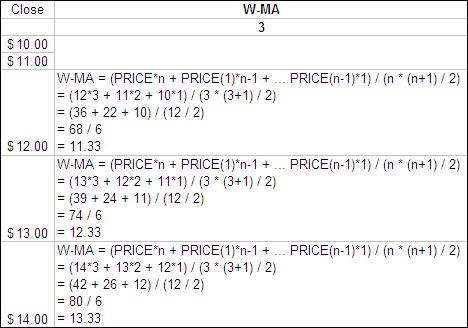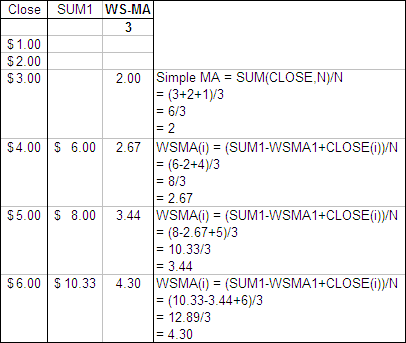The Weighted Moving Average is going up against several other MAs in the ‘Technical Indicator – Fight for Supremacy‘ so lets briefly cover how it is calculated and to make things easy I have put together an Excel Spreadsheet for free download.
In an attempt to be more reactive to price changes a Weighted Moving Average applies the most weight to the latest data rather like an EMA does. But instead of the weighting being exponential it is linear like a SMA. Below you can see how the weighting is applied to a 50 period W-MA, EMA and SMA:
.
 .
.
How To Calculate a Weighted Moving Average
.
The Formula is:
W-MA = (PRICE*n + PRICE(1)*n-1 + … PRICE(n-1)*1) / (n * (n+1) / 2)
Where:
n = The smoothing period.
Here is an example of a 3 period Weighted Moving Average:
.
 .
.
Weighted Moving Average Excel File
.
I have put together an Excel Spreadsheet containing a Weighted Moving Average and made it available for FREE download. It contains a ‘basic’ version displaying the example above and a ‘fancy’ one that will automatically adjust to the length you specify. Find it at the following link near the bottom of the page under Downloads – Technical Indicators: Weighted Moving Average (W-MA). Please let me know if you find it useful.
.
Weighted Moving Average and a Simple Moving Average
.

.
Test Results
.
We tested several different types of Weighted Moving Averages including the W-MA through 300 years of data across 16 global markets to reveal which is the best and if any of them are worthy of use as a trading tool. See the results – Weighted Moving Averages Put To The Test
.
.


